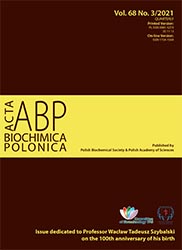Genetic and physiological diversity of white Spanish broom (Chamaecytisus albus) endophytes
Abstract
Chamaecytisus albus (Spanish broom) is a legume shrub that can be found in only one natural locality in Poland. This specimen is critically endangered; therefore, different actions focusing on protection of this plant in the natural habitat are undertaken, and one of them involves studies of the population of Chamaecytisus albus bacterial endophytes, which in the future could be used as bioprotectants and/or biofertilizers. A collection of 94 isolates was obtained from Spanish broom nodules, and the physiological and genetic diversity of these strains was studied. A few potentially beneficial traits were detected, i.e. secretion of cellulases (66 isolates), production of siderophores (60 isolates), phosphate solubilization (25 isolates), and production of IAA (58 isolates), indole (16 isolates), or HCN (3 isolates). Twenty-nine of the 94 tested isolates were able to induce the development of root nodules in plants grown in vitro and can therefore be assumed as Chamaecytisus albus symbionts. Genome fingerprinting by BOX-PCR, as well as gyrB and nodZ gene sequencing revealed a great genetic diversity of specimens in the collection. The symbiotic isolates were classified in different clades, suggesting they could belong to different species, however, most of them revealed sequence similarity to Bradyrhizobium genus.
Acta Biochimica Polonica is an OpenAccess quarterly and publishes four issues a year. All contents are distributed under the Creative Commons Attribution-ShareAlike 4.0 International (CC BY 4.0) license. Everybody may use the content following terms: Attribution — You must give appropriate credit, provide a link to the license, and indicate if changes were made. You may do so in any reasonable manner, but not in any way that suggests the licensor endorses you or your use.
Copyright for all published papers © stays with the authors.
Copyright for the journal: © Polish Biochemical Society.


